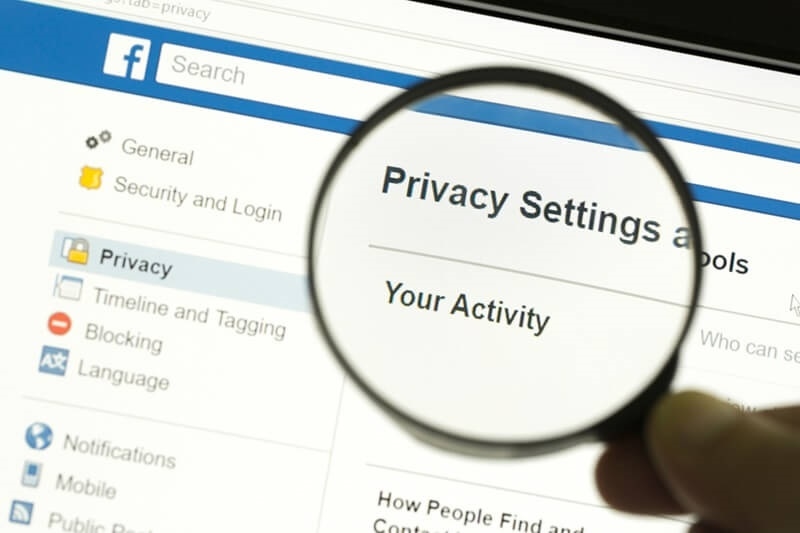
In the hyper-connected world of today, it's not a choice to control digital privacy settings anymore—it's a necessity. When you're sharing family pictures on Facebook, posting your day through Instagram stories, or commenting on popular topics on Twitter, every digital interaction creates a trail. Without your privacy settings properly configured, you're open to cybercrime breaches, identity theft, and data misuse.
To help protect your online identity, here are some good practices for managing digital privacy settings on different social media platforms, including the Facebook privacy checklist, how to protect privacy for viewers of your Instagram stories, and restricting data sharing settings on Twitter. We'll also examine how to limit third-party apps on social media and use US privacy tool extensions to protect your online presence further.
Social media sites are data goldmines—not only for advertisers, but for hackers and nefarious third parties as well. Each "like," share, or tag can give away something about you. If default privacy settings are used, you're probably sharing more personal information than you think.
Taking control of digital privacy settings involves taking control of what you share and with whom. It's the online parallel of locking your front doors when you're going out.

Facebook is one of the most data-hungry sites, and if left uncontrolled, your personal data may end up in the hands of strangers or be exploited by third-party apps.
Run this Facebook privacy checklist every few months since Facebook also changes its privacy settings quite often. By making this a part of your online habit, you'll remain one step ahead of potential threats of exposing data.
Instagram is a platform that is still primarily about visually communicating. Nonetheless, it can serve as a real threat to the privacy of personal data -- and the biggest via stories.
By doing these things, you are ensuring a tighter grip on who sees what, thus protecting your Instagram story viewers' privacy and maintaining social media hygiene.
Twitter is set up to encourage public dialogue; however, its default settings tend to favor data sharing over privacy.
Changing your Twitter data sharing settings not only restricts access to personal data but also prevents Twitter from sharing it with advertisers and marketers.
Third-party apps are stealthy data miners. These are typically games, surveys, or external login applications that ask for access to your profile.
You should always limit third-party applications in social media to further reduce the level of vulnerability. You may not realize, but each additional permission increases your digital vulnerability.
Privacy-protecting browser add-ons can provide another level of security while browsing social media.
These US privacy tool extensions, and related platform tools will help you better manage digital privacy settings beyond the individual social media sites, while still being cross-platform.
There are different considerations with respect to privacy settings for each platform—LinkedIn, Snapchat, and TikTok. A one size fits all approach is not appropriate in this case.
Use your time to thoroughly review all settings on each platform. Regular reviews enable you to keep your digital privacy settings in concert with your comfort level.
Two-step or two-factor authentication adds another level of security to you accounts, and should be used whenever available.
This reduces the likelihood of unwanted access, particularly if your password is hacked. Most social sites now compel this for high-risk accounts.
In addition to controlling settings, you also need to monitor what already exists about you.
1. Google Yourself: Find out what information is publicly available about you.
2. Look for Tagged Photos and Posts: You may want to simply untag them or delete them.
3. Use Data Monitoring Services: Services and products like DeleteMe and Incogni will help you manage your footprint online.
The benefits of keeping a proactive eye is that you can correct any mistakes and manage the exposure before it becomes a risk.
Privacy settings are not permanent. Sites rolled out new features and updates almost daily, often changing defaults that may inadvertently disadvantage you.
Others near you/around you can hinder your digital safety. For instance, someone tagging you in public posts or posting your information unintentionally.
In this increasingly data-fueled world, it has never been more important to keep your digital privacy settings off social media.There are lots of tools and methods available to you, from reducing data sharing settings on Twitter, to following a privacy checklist for Facebook, from limiting app permissions to using US privacy tool browser extensions.
Don't wait for a violation of privacy to begin. Start now, stay vigilant, and develop privacy management as a habit in your digital life. Following these best practices can help you get the maximum enjoyment out of social media while maintaining your personal safety.
This content was created by AI